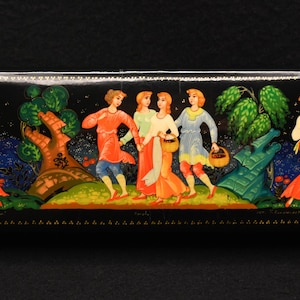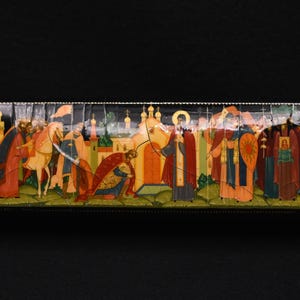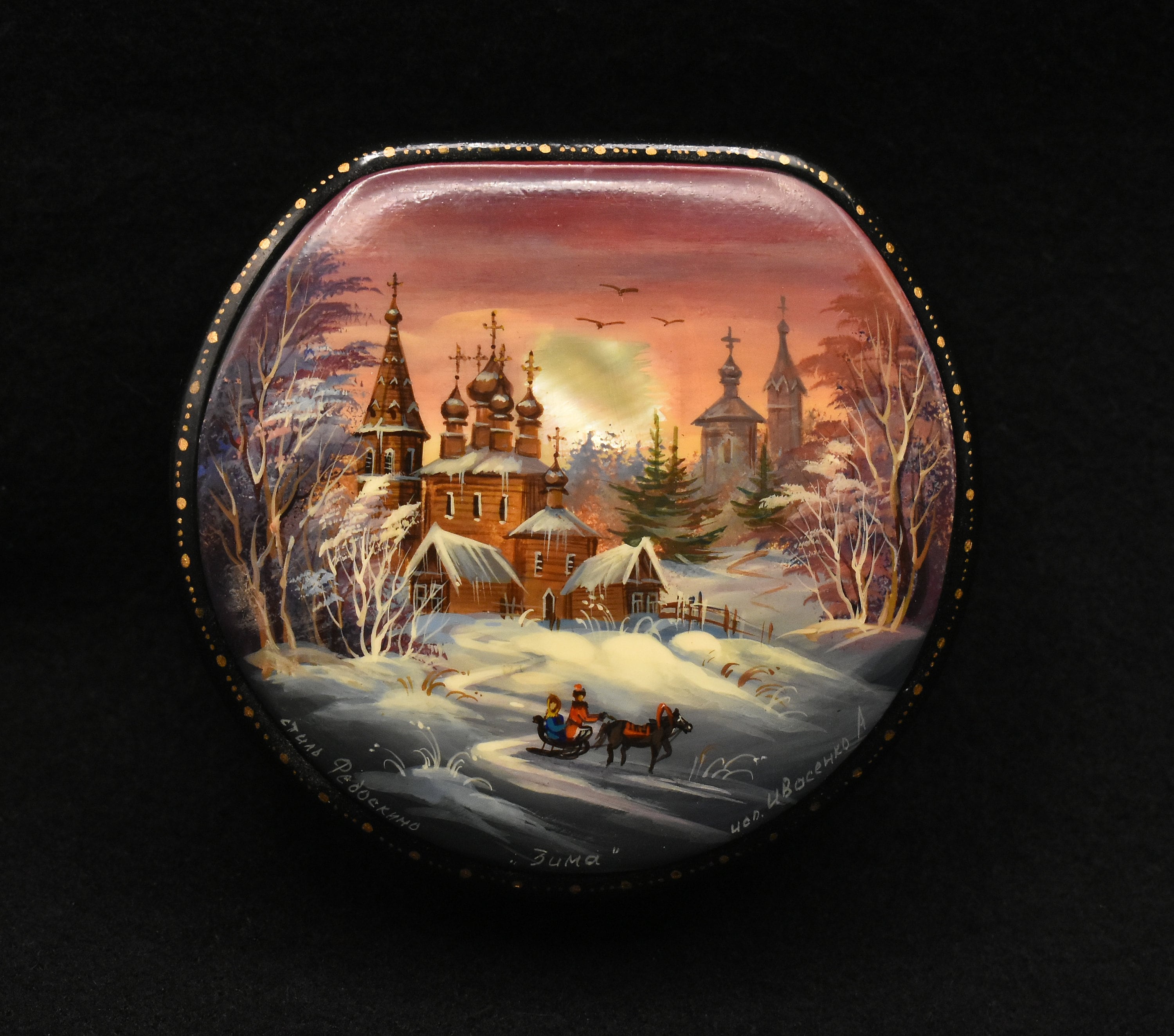
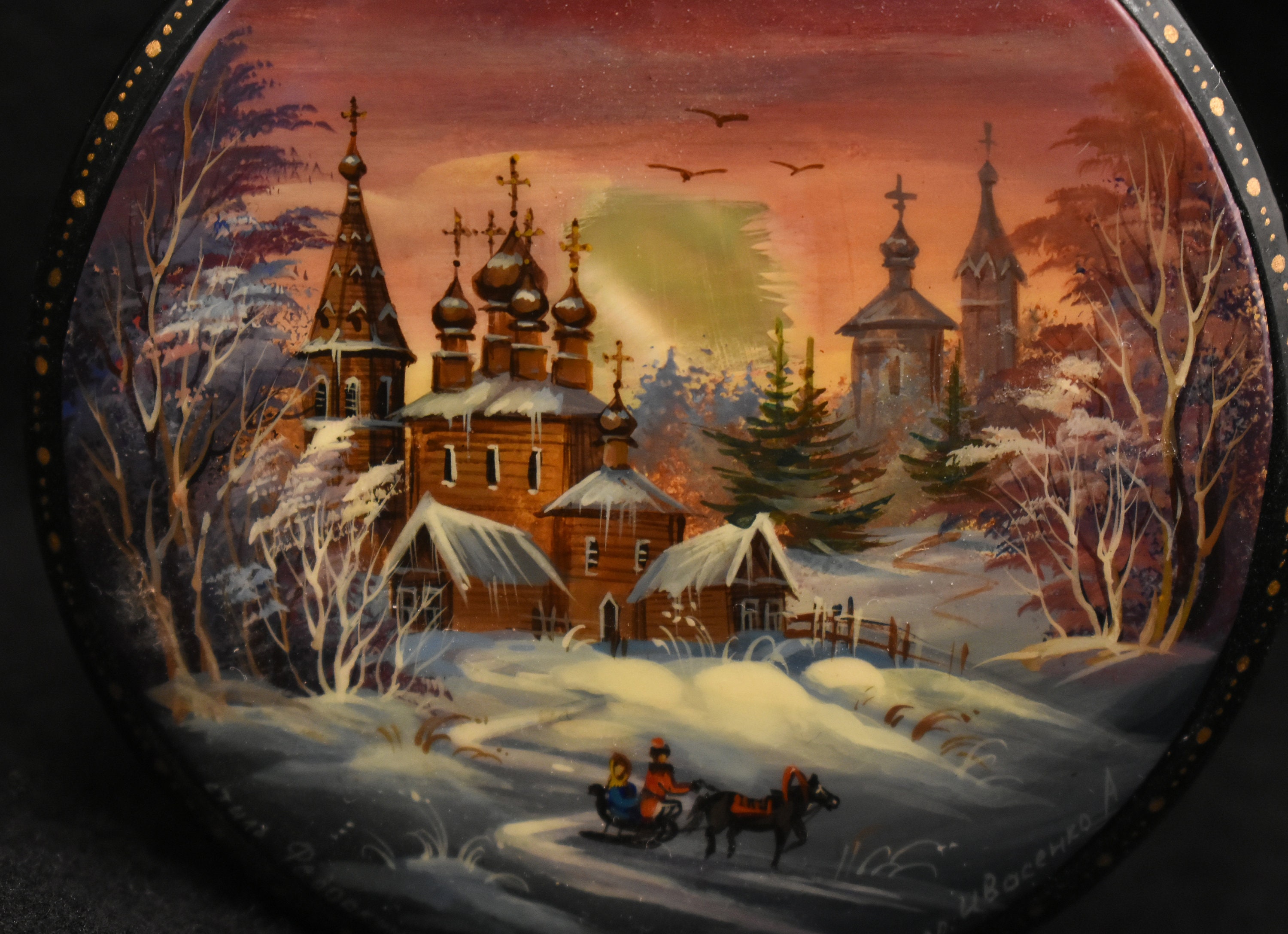

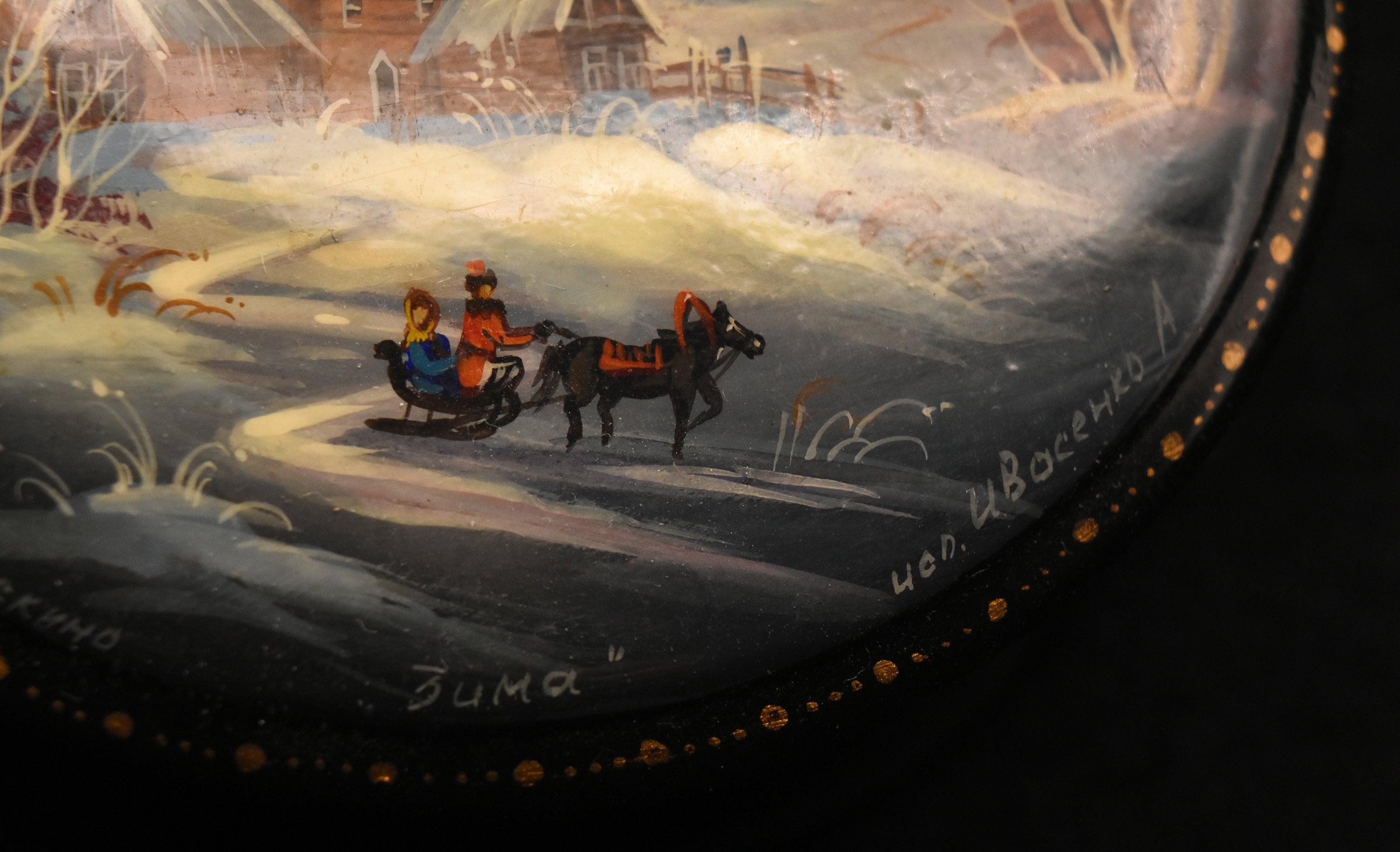


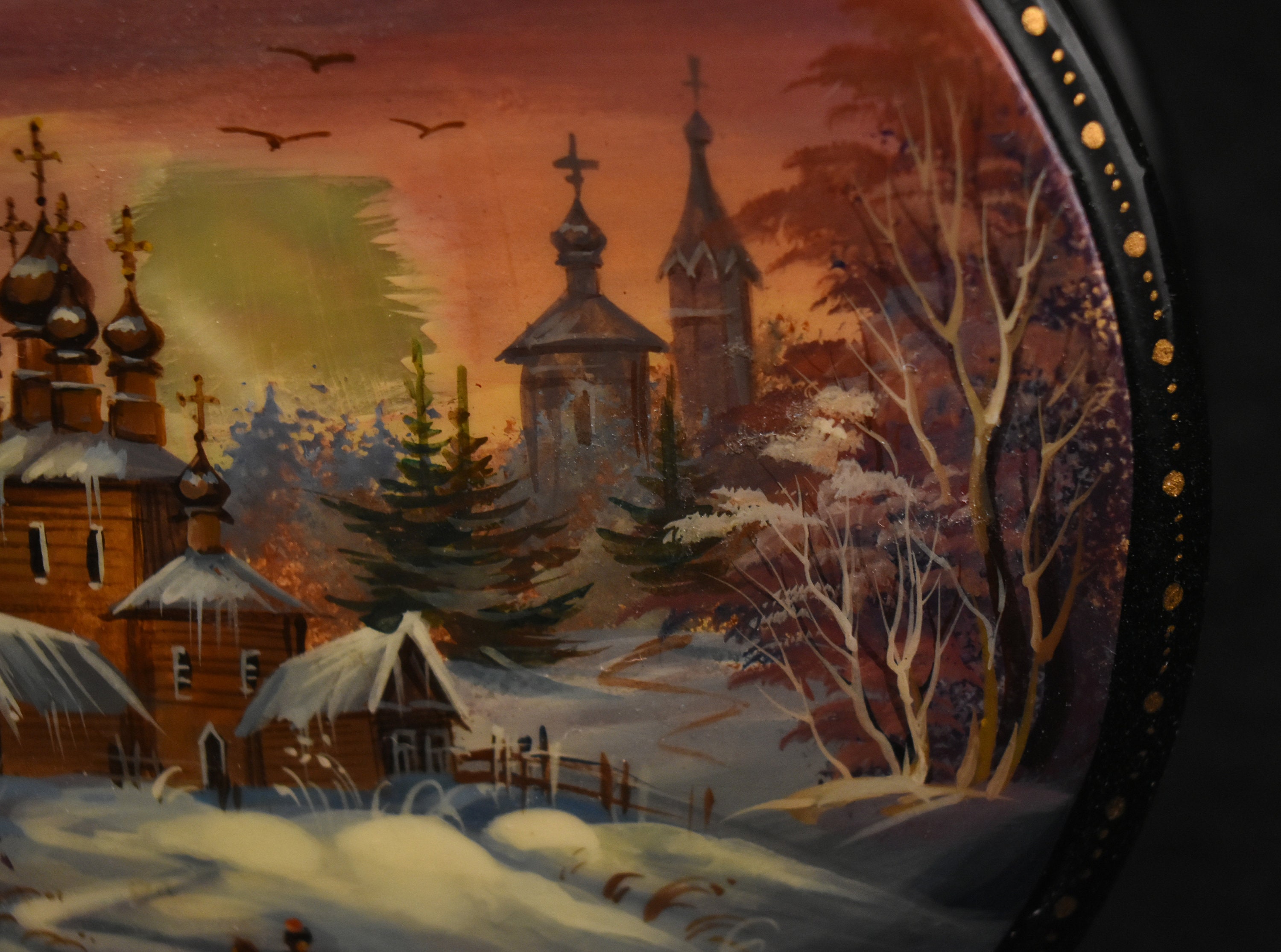
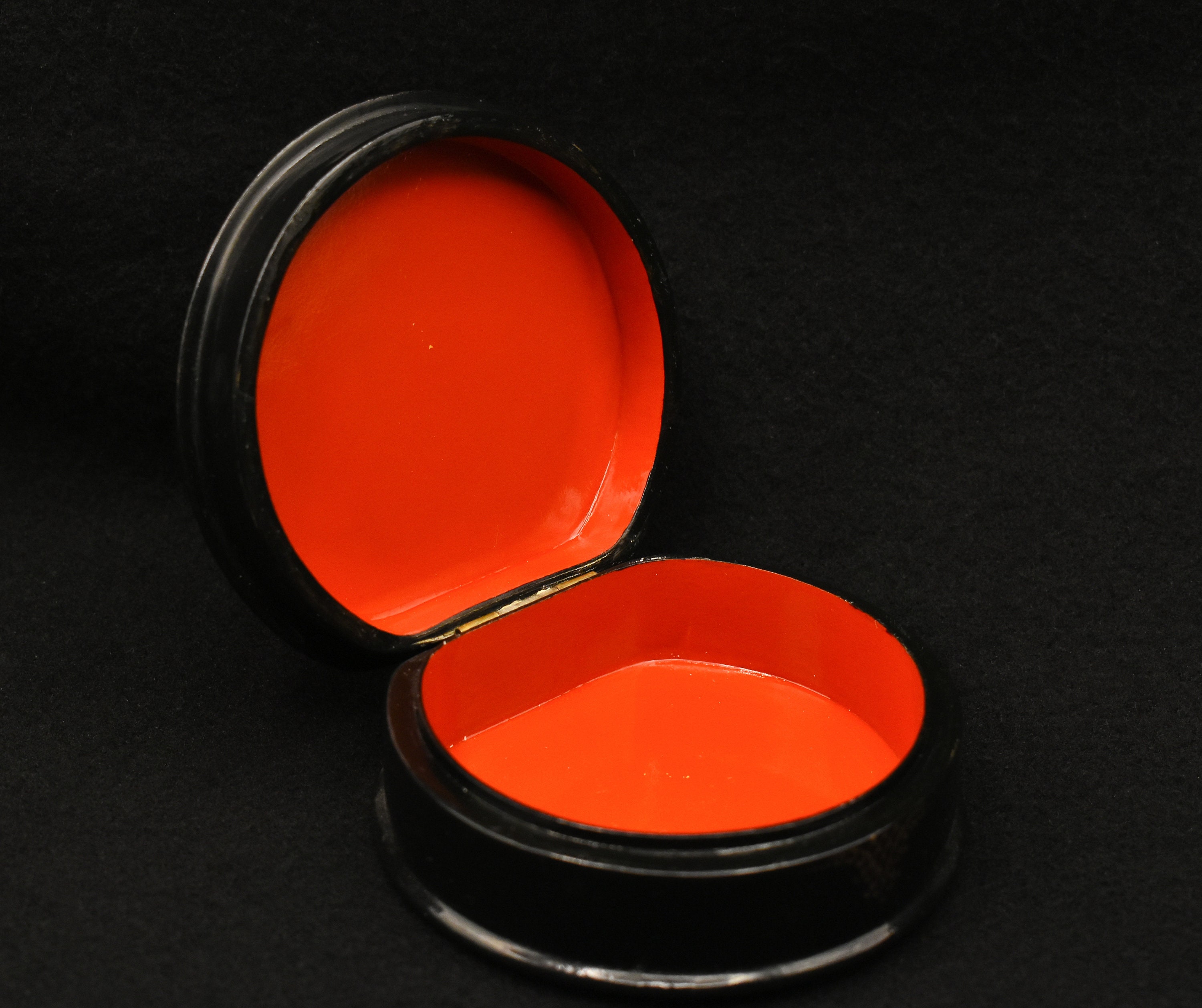
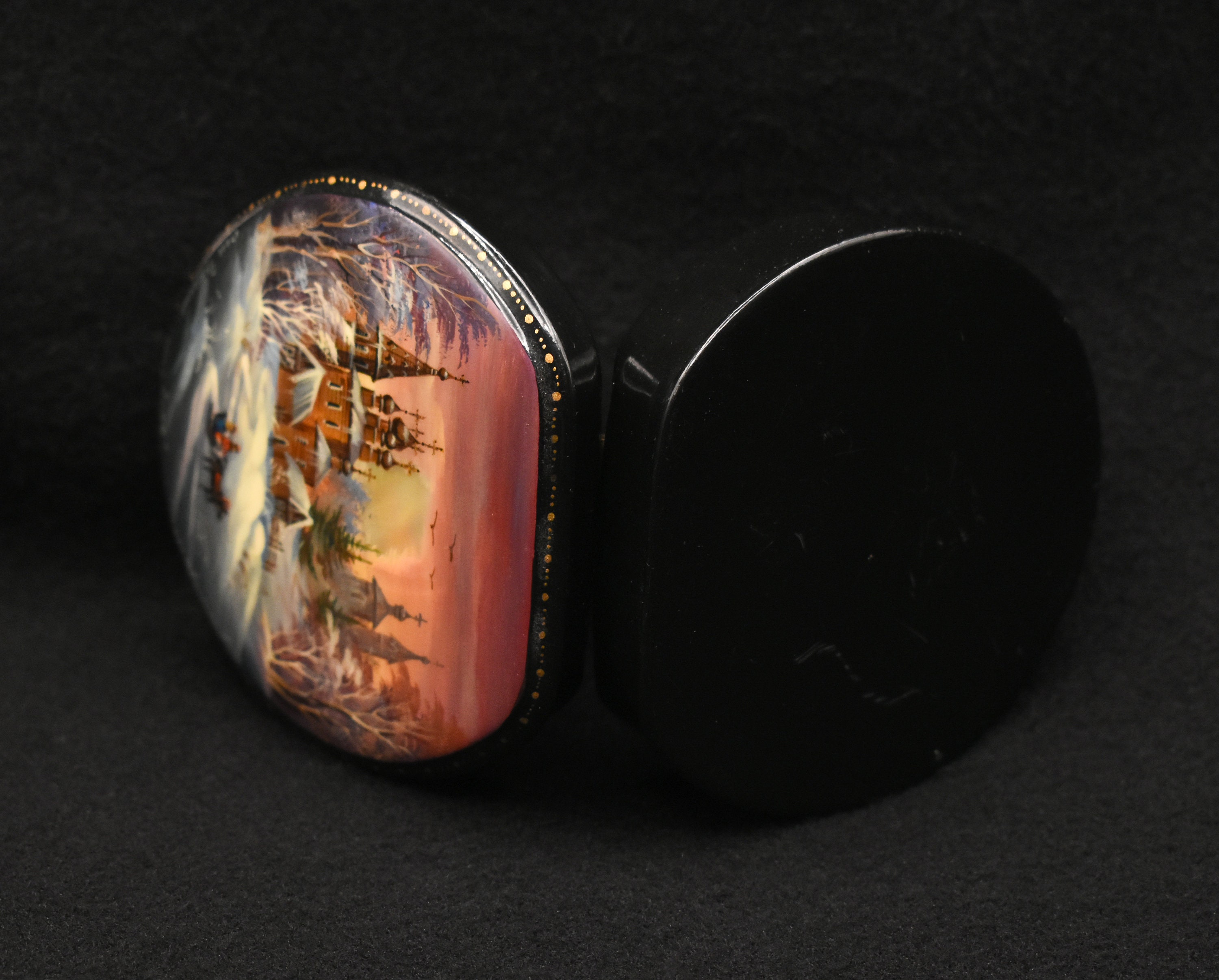
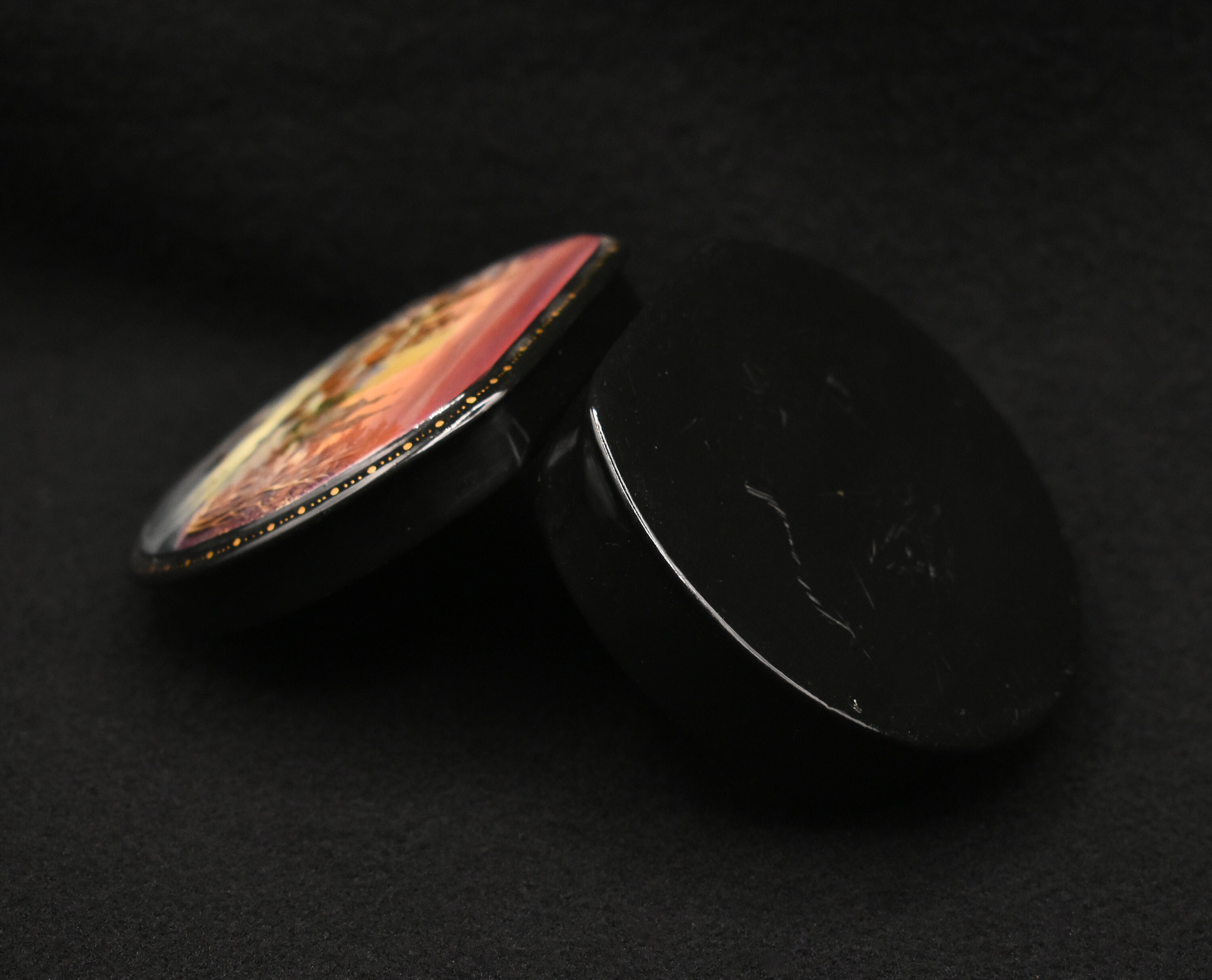
Prints and Art
Gorgeous Russian Fedoskino Lacquer Papier-mâché Box - "Zima" (Winter)
$171.21
-
DetailsPlease note -TARIFFS PAID! US buyers need not worry about any additional charges! Order with confidence, knowing you won't be surprised with any additional fees.
Although the following history is the same as the other Lacquer Boxes in my store, scroll down to the paragraph break for product-specific description.
Some of you might be familiar with these stunning Russian boxes, but few know the story of their origins. It actually began over 200 years ago...
It began in a town called Fedoskino, from which our box hails. They began developing the techniques that would spawn Russian lacquer boxes in the late 1600s. Fedoskino was the center of the art of creating religious icons (highly-sought-after paintings of religious symbols and characters). Having developed some truly breathtaking painting techniques (including using liquified precious metals such as gold and silver and painting with a single hair follicle for some of the most spectacular detail I've ever come across), it was the natural birthplace of these stunningly intricate boxes. Starting in the 1800s, they were made specifically of a papier-mâché base. This would take approximately 6 weeks to complete and would include a base of linseed oil, rendering it impervious to moisture. This method also ensured a stable base that would not warp and does not change size due to temperature changes. Then, the painting process would begin. First, it passes through the hands of an apprentice who ensures a smooth base of colour - the interior is painted bright red and the exterior a deep black. When the masters get their hands on these pieces is when the magic begins. Using a magnifying glass, in many cases, and the richest and brightest pigments available, the master painter applied the stunning colours and textures you see here. The signature along the bottom and the border design are the obvious places where we can see gold, but if you look closely, you can see the sparing application of precious metals throughout the piece. Silver is used sparingly in the snow, but more obviously in the snow resting on the roofs of the church. Normally, there would be more silver and gold accents, but I believe the artist wanted the pearl to really stand out - more on that later. The detail is just staggering. In the 1800s, 4 towns emerged as the leaders of papier-mâché lacquer boxes, each of which specializing in their own methods and styles. As such, one can tell apart the pieces based on their colours and textures, as well as the methods of applying these magnificent pigments. Kholui, Palekh, Fedoskino and Mstyora are the 4 towns in question and they still produce these stunning pieces, although after the fall of the USSR in 1991, their quality waned. The popularity of these boxes skyrocketed with international recognition and, naturally and most-unfortunately, resulted a ton of counterfeits and fakes. Luckily, manufacturers of fake pieces are not patient, so the box itself doesn't go through the rigours of proper papier-mâché manufacture. The fakes are made of plastic or resin, so they're easily identified. Firstly, one could find a slight grid pattern on the base, indicating a machine-made box. The linseed oil base would start to settle after 6 months or so, releasing a distinct odour, so the interior has a definite 'antique' smell to it, nearly impossible to replicate with a resin box. The weight of the fake boxes would be significantly heavier, as well - papier-mâché was very light. The texture of the box would easily reveal the content, as well. One must simply tap or flick the bottom of the box. If there's a sharp sound or a click, it's not the genuine article. Papier-mâché boxes sound muted, almost soft, when tapped. Lastly and most-importantly, we must examine the image itself. Is there the depth that comes with layers of meticulous application of lacquer? A magnifying glass is very useful in finding these imperfections and identifying a fake. Luckily, our box checks all the right boxes and its originality is not in question. C&K is proud to have a history of importation, by my family, over the last half-century. My grandfather even recognized the name of the artist... along the bottom, painted by the artist is the name of the town, title of the piece and the artist. Those are, "Fedoskino (Style)," "Zima" (Winter), and "A. Yvosenko" - all according to tradition and verified origins.
The artistic merit of the piece is no longer in question, nor is the origins of this stunning, hinged box, but what is the picture and most importantly, what is that square of odd colour?...
First, the image is called "Winter," and shows one or possibly 2 churches in the background with meticulously painted children on their horse-drawn sleigh. Most of these pieces are based on real places and real buildings, so I have done my utmost to try to identify the buildings, pictured. I believe, through exhaustive research, I've identified the buildings in question. In a town called Suzdal, not 3 hours from Fedoskino, is the Church of Transfiguration. Suzdal has many churches and has appropriately been named a UNESCO World Heritage site, but not too many are left in their original bare-wood finish. If you were to peruse the churches of the town, you would stumble upon this church, and not far from it, another cathedral reminiscent of the second structure we find in our piece - in the distance. Without digging too far into the thousands of ancient churches in the country, I believe the proximity to the town and the popularity of the churches as tourist attractions would precipitate many artistic pieces made in their image.
Now that we've covered the subject matter, I'd like to broach the topic of that piece that is assumedly a sunset. I had never seen this technique before as it's exceedingly rare. If you look carefully, you can see a "cut-out" around that area. There's a slight difference in height from the remainder of the piece, as well, so this was added once the box was completed. This piece is - I kid you not - Pearl! Despite the incredible level of delicacy of flakes of pearl, this small section was added and blended into the scene to artistically show a beautiful sunset. It's truly a remarkable piece of craft and you'd be hard-pressed to find its equal.
Naturally, with 75-year-old papier-mâché, there are going to be some blemishes on the item. The underside is scratched, but not so badly that it has broken through the lacquer. The top is in excellent condition, but one can see the edges of the pearl-adorned sunset (I've done my best to show this in the photos and video) and there are some VERY light surface scuffs... you'd really have to look closely to see any faults. It's simply stunning,
It measures just over 8cm, in diameter, and just over 3cm in height. The hinge is ever-so-slightly loose, as is common with smaller pieces with smaller hinges - this does not detract in the least, from function or beauty and is perfectly useable as a trinket box, jewelry box or simply a staggering piece of art.
As always, should you have any questions or comments, I'm always happy to return messages almost immediately.
Thank you for visiting C&K! -
Shipping & Policies
Shipping from Canada
Processing time
1-2 business days
Customs and import taxes
Buyers are responsible for any customs and import taxes that may apply. I'm not responsible for delays due to customs.
Payment Options
Returns & Exchanges
I gladly accept returns and exchanges
Just contact me within: 3 days of delivery
Ship items back to me within: 7 days of delivery
I don't accept cancellations
But please contact me if you have any problems with your order.
The following items can't be returned or exchanged
Because of the nature of these items, unless they arrive damaged or defective, I can't accept returns for:
- Custom or personalized orders
- Perishable products (like food or flowers)
- Digital downloads
- Intimate items (for health/hygiene reasons)
Conditions of return
Buyers are responsible for return shipping costs. If the item is not returned in its original condition, the buyer is responsible for any loss in value.
Frequently Asked Questions
Can I combine delivery on multiple items?
Of course! We'd be happy to assist. Just send us a quick message and we'll make sure to combine your items into a single package to reduce the shipping costs.


